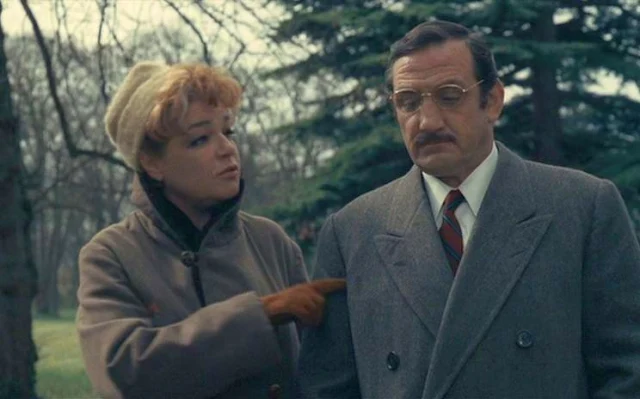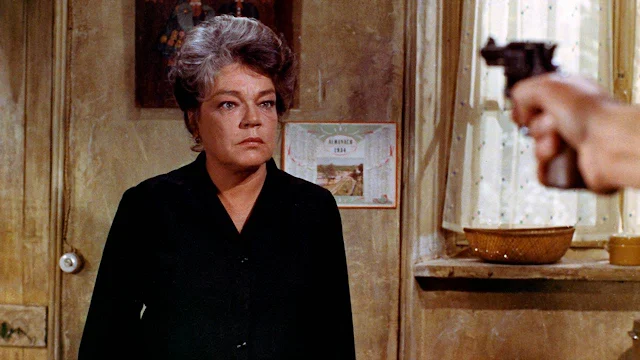A blog formerly known as Bookishness / By Charles Matthews
"Dazzled by so many and such marvelous inventions, the people of Macondo ... became indignant over the living images that the prosperous merchant Bruno Crespi projected in the theater with the lion-head ticket windows, for a character who had died and was buried in one film and for whose misfortune tears had been shed would reappear alive and transformed into an Arab in the next one. The audience, who had paid two cents apiece to share the difficulties of the actors, would not tolerate that outlandish fraud and they broke up the seats. The mayor, at the urging of Bruno Crespi, explained in a proclamation that the cinema was a machine of illusions that did not merit the emotional outbursts of the audience. With that discouraging explanation many ... decided not to return to the movies, considering that they already had too many troubles of their own to weep over the acted-out misfortunes of imaginary beings."--Gabriel García Márquez, One Hundred Years of Solitude
Search This Blog
Showing posts with label Walter Wottitz. Show all posts
Showing posts with label Walter Wottitz. Show all posts
Monday, September 30, 2019
Un Flic (Jean-Pierre Melville, 1972)
Un Flic (Jean-Pierre Melville, 1972)
Cast: Alain Delon, Richard Crenna, Catherine Deneuve, Riccardo Cucciolla, Michael Conrad, Paul Crauchet, Simone Valère, André Pousse. Screenplay: Jean-Pierre Melville. Cinematography: Walter Wottitz. Production design: Théobald Meurisse. Film editing: Patricia Nény. Music: Michel Colombier.
It's amazing how hard it is to make Alain Delon look ordinary. In Un Flic, the last film by Jean-Pierre Melville, who made Delon's unsurpassable good looks and cool the essence of Le Samouraï (1967), he's supposed to be a tough, weary cop, a chief of detectives. So his hair is not so neatly combed as usual, he's made up to look a little pale, and there are wrinkles under the celebrated blue eyes. The thing is, however, that Delon pulls the character off successfully -- unlike other handsome actors, he makes us look past the beauty. We see what's going on in his head as he makes his rounds. It's Delon's charisma that justifies the film's title, because in fact the movie focuses more on the robbers than on the cops. (When it was released on video in the United States it was retitled Dirty Money.) The thieves get the film's two big set pieces: the bank robbery at the beginning of the film, and the famous 20-minute helicopter-and-train sequence in the middle, in which Richard Crenna's Simon is put through a hair-raising James Bond-style stunt. The latter scene is preposterous, of course: When and how did Simon and the helicopter guys practice for this elaborate heist, which has to come off without a hitch? But the sequence works in part because the rest of the film is based in gritty reality, such as the bleak off-season ocean-front setting of the opening, with the rows of anonymous modern buildings presenting blank, boarded up windows to the stormy winter sea that roars in the background of the bank robbery. (The sound recording of André Hervée and sound editing of Maurice Lemain deserve special mention.) Un Flic exists in a neverland intersection between actuality and movie artifice, a place Melville visited in almost all of his films.
Saturday, September 28, 2019
Army of Shadows (Jean-Pierre Melville, 1969)
Cast: Lino Ventura, Paul Meurisse, Jean-Pierre Cassel, Simone Signoret, Claude Mann, Paul Crauchet, Christian Barbier, Serge Reggiani, André Dewavrin, Alain Dekok, Alain Mottet, Alain Libolt, Jean-Marie Robain. Screenplay: Jean-Pierre Melville, based on a novel by Joseph Kessel. Cinematography: Pierre Lhomme, Walter Wottitz. Production design: Théobald Meurisse. Film editing: Françoise Bonnot. Music: Éric Demarsan.
The stoic restraint that pervades Army of Shadows extends to the images provided by the credited cinematographers, Pierre Lhomme and Walter Wottitz. For a long time I wasn't really sure whether the film was made in color or black and white, so desaturated are the images. Occasionally the color of a garment or Simone Signoret's hair or the blue of the Mediterranean in the background will catch the eye, but for the most part the film takes place in a world drained of anything suggestive of vivid life. Death is presented as something inevitable, as something that has to be gone through, so futile has resistance to the occupation of France by the Nazis become. Faced with executing a traitor, the Resistance operatives feel reluctance and guilt but also proceed practically: The sound of a gun would attract attention; there are no usable knives at hand; so the solution is to strangle their former comrade with a kitchen towel, and the garroting proceeds with as little drama as possible. This is a film about endurance rather than action, about moral choices made with deliberation and without fuss. Sometimes what action there is feels contrived: The rescue of Gerbier from prison at the moment of his execution depends on sheer luck and coincidence and not on skillful timing and precise intelligence. But dramatic probability is not the point, instead it's the feeling that all of the lives depicted in the film are poised on a razor's edge.
Thursday, May 2, 2019
The Widow Couderc (Pierre Granier-Deferre, 1971)
The Widow Couderc (Pierre Granier-Deferre, 1971)
Cast: Simone Signoret, Alain Delon, Ottavia Piccolo, Jean Tissier, Monique Chaumette, Boby Lapointe. Screenplay: Pierre Granier-Deferre, Pascal Jardin, based on a novel by Georges Simenon. Cinematography: Walter Wottitz. Production design: Jacques Saulnier. Film editing: Jean Ravel. Music: Philippe Sarde.
Subscribe to:
Comments (Atom)












































